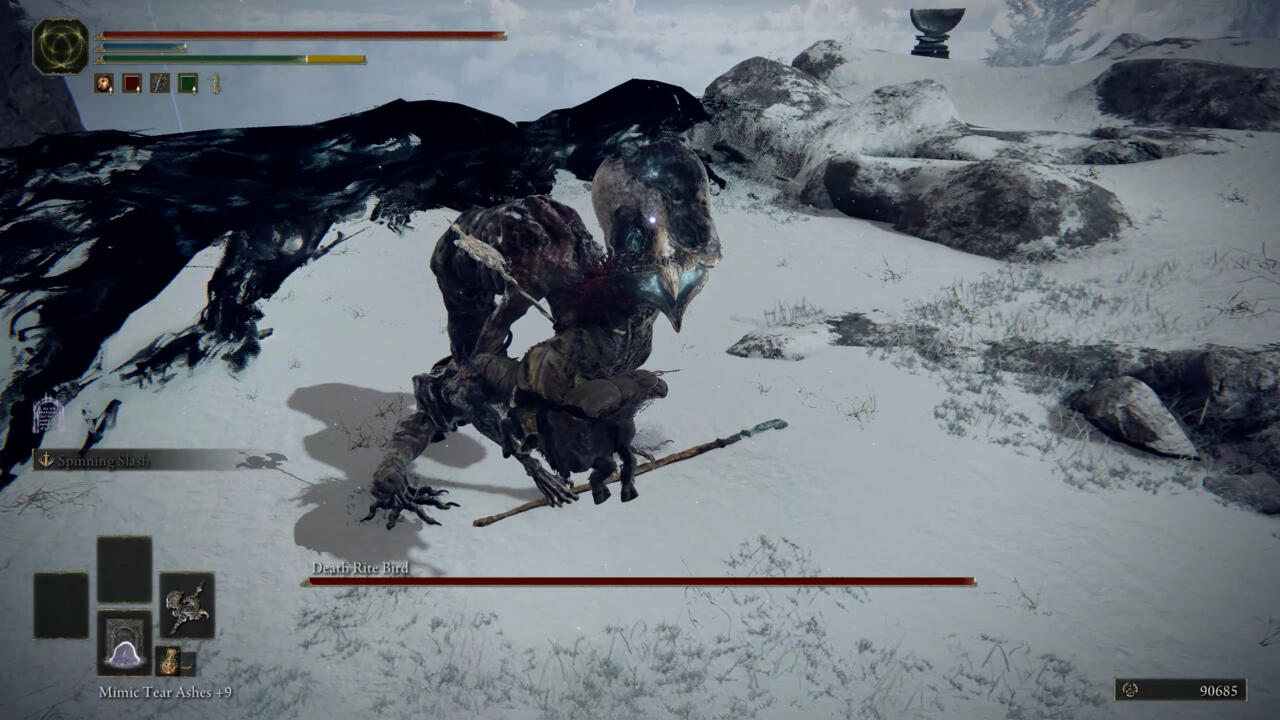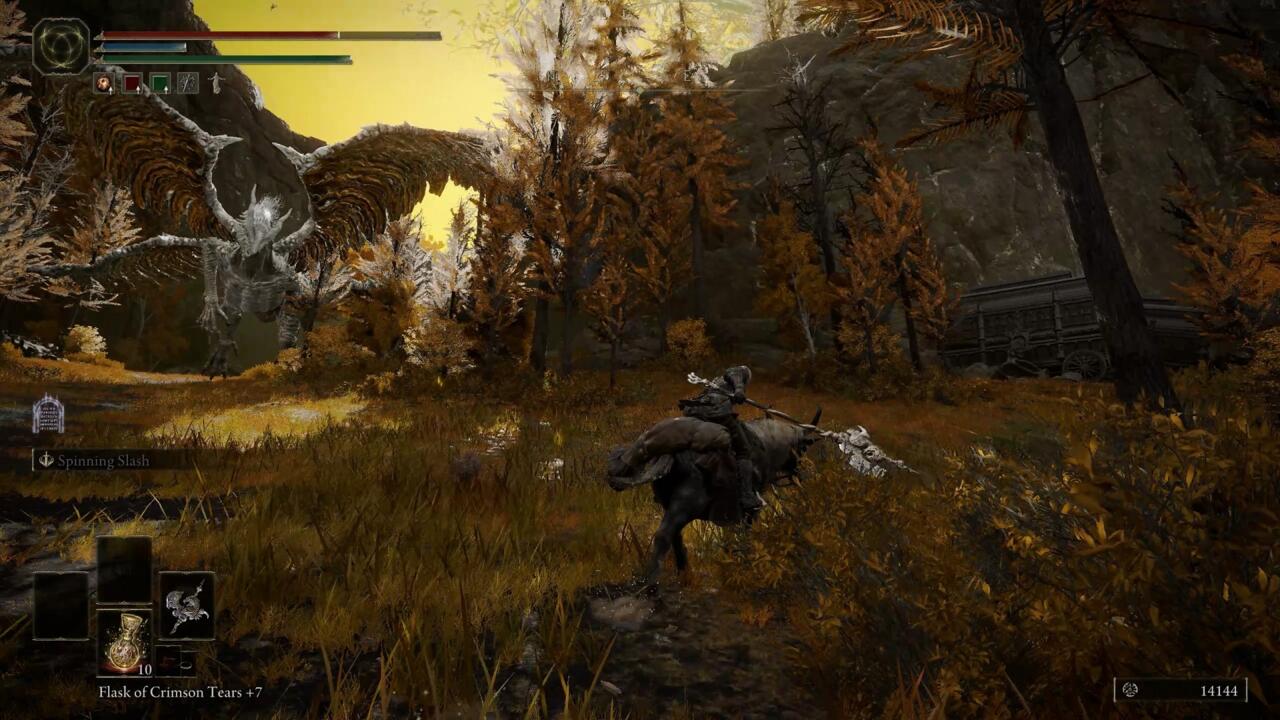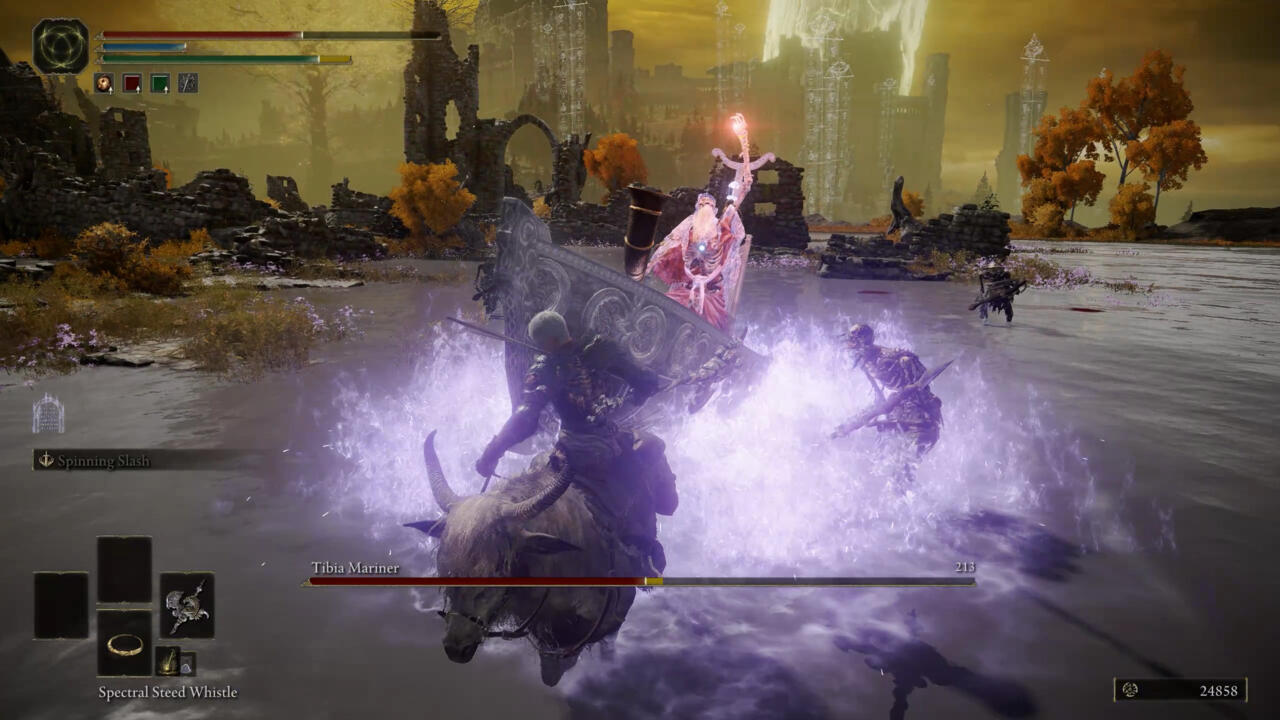From Software's games have always had a somewhat niche audience, but with the release of Elden Ring, the size of that audience seems to have exploded. The Soulsborne formula works exceedingly well when applied to the template for open-world games, it turns out. In fact, you could argue that it's exploring a strange and enormous world, rather than the usual Souls-style difficulty and mechanics, that makes Elden Ring so fun.
The open-world genre is pretty expansive, and as with major winners before it, like Ubisoft's Assassin's Creed games or Nintendo's The Legend of Zelda: Breath of the Wild, Elden Ring is sure to leave a mark on the field. The question is, what should the rest of the open-world genre learn from Elden Ring?
Though there's a lot to like about Elden Ring (as well as quite a few things to be annoyed with), there's one element that developers of other open-world games should take note of and use liberally, because it alters the entire feel and scope of these games: the field boss.
Field bosses in Elden Ring are bosses you run into while just wandering in the world, outside of dungeons. They're bosses, but, you know, out in the field. They're not a major change to open-world design, per se--games like Horizon Forbidden West have monster robot creatures like the Thunderjaw or Tremortusk just wandering around its world, and you might even get a similar boss fight scenario in Breath of the Wild with its tough Lynel enemies scattered throughout the world. The difference is in how Elden Ring handles such encounters, how many of them there are, and what they mean for the world at large.
In a lot of open-world games, the actual game is all about destinations. Especially with the rise of the Ubisoft model following the popularity of titles such as Assassin's Creed or Far Cry 3, you're constantly being directed to a specific location. You might pass something interesting and distracting, a hut or a statue or a treasure chest, along the way, but the majority of the time, the interesting gameplay is still about the place you're going to.
Part of what makes Elden Ring so resonant with players is the lack of direction as to where you need to go, making many paths equally viable. Quests and important goals are only gestured to in vague terms, either by characters or by the "grace" that points you through the game. You can follow these grace trails toward a quest goal (or rather, some boss you have to kill), but you still only have a generalized sense of where you're going, and no way of really knowing how to get there. The game puts a premium on exploration, which makes it feel freer and its world more interesting than that of many other open-world titles.

Still, the idea that you're not given much direction in Elden Ring isn't what makes it good. Plenty of open-world games leave you to your own devices, but often their worlds feel empty and it can still seem like you're just walking a long way to get to the fun. What makes Elden Ring's world work is not the freedom to go anywhere or to puzzle out pathways--it's the unexpected surprises along the way.
When I first made it to the Altus Plateau, I did so by traveling through an underground tunnel and then climbing up scaffolds and ladders through an old mining camp. The trip culminated in a boss fight before I emerged in the new area. It was a cool trip, but ultimately, a somewhat usual dungeon adventure that made sense as a transition to a new section of the game. As I started to ride up the hill toward the plateau proper, however, the really exciting thing happened: A massive dragon swooped down ahead of me and landed in my path, spraying the land with ludicrous orange lightning strikes. And soon, realizing I couldn't win, I jumped on Torrent and galloped the hell out of there, desperately trying to avoid bolts landing on the road around me, white-knuckling my way up the road in hopes of escaping with my life and my runes.
That experience is what makes Elden Ring work so well. You might have a destination in mind when you set out across the shallow lakes of Liurnia or the rolling, diseased fields of Caelid, but you don't know what you're going to run into along the way. And that's not just in the sense of a game like The Elder Scrolls V: Skyrim, when a fortress or a cave might distract you and lead to something you didn't expect. Some huge creature might leap down from a cliff, swoop in from the coast, or rise from the graveyard beneath your feet, and you never really know when to expect it.
Because of this, the journey to wherever you're going is just as important as the place you're trying to go. Field bosses pop up as obstacles, suddenly dropping you into tough fights you might not have expected, and drastically changing the dynamic of an area simply by existing. Think of the Tree Sentinel, the mounted golden knight patrolling right next to the first site of grace you encounter after leaving the game's tutorial. You wander toward this guy and he wrecks you straight away. You immediately learn a lesson--the very land is hostile, you might not be able to face down every threat immediately, and you'll need to find ways around them and to beat them. The Tree Sentinel's gravity alters the entire area, forcing you to take new paths, watch his movements, commit to a tough battle, or find ways to avoid one.

These fights also feel fundamentally different from just running into something huge and scary in the world. Tyrannosaurus-like Terrorjaws in Horizon are frightening, but when you happen across one, there's no real need to engage with it. If you want the special crafting items Terrorjaws drop, you might fight it--but for the most part, you're going to avoid those encounters, as they're time-consuming, difficult, and distract from your actual goal. When you see a Terrorjaw wandering an area, you go around, but even if you do attack it, the fight isn't especially different from engaging any other of Horizon's robot dinosaurs in the wild; this robot dinosaur is just bigger and takes longer to kill.
Contrast that with a field boss in Elden Ring. When you run into one of these bosses, the game treats it like any other boss fight. A huge life bar appears on the screen and the music changes dramatically. The game indicates that this is an event; this isn't a run-of-the-mill monster enemy. It has the same weight as any boss you encounter by going through a fog gate.
It also indicates that these fights are worth taking on, despite being optional and posing a frightening challenge. The change in presentation indicates that this is a big deal, and the way Elden Ring handles bosses lets you know also that this fight will be worth it. One of the early field bosses in Limgrave is the Night's Cavalry, a member of a group of horseback knights that only appear when it's dark out. Like the Tree Sentinel, taking it on is tough--but your reward is the boss's excellent flail, a weapon you may well use for the rest of the game. Taking on the Night's Cavalry is optional, and you can avoid it if you don't think you're up to the challenge or never discover it was there at all, but the boss showing up on your journey fundamentally changes it, no matter what. You might have been heading for Castle Morne to complete a story quest, but the story of how you got there and what you faced becomes just as important as what you found when you arrived.
Field bosses are an encapsulation of what makes Elden Ring stand apart from similar games--even the most similar ones, like Breath of the Wild. While that game engenders a lot of the same feelings as Elden Ring, especially in the freedom created by allowing you to just survey the world and find interesting things to travel to and investigate, what you discover doesn't always feel rewarding. You might make your way to the top of a mountain to check out some weird statues you spotted from miles away, but that doesn't guarantee there will be anything more to see when you arrive. But with Elden Ring, chances are good that even if there's little waiting for you at the strange spot you decided to check out, the trip will have been worth it for what you discover (and fight, and kill) on your way there.

The way Elden Ring deals with field bosses embodies a design ethos that makes the world of Elden Ring feel like it matters--as if it's big for a reason, and hasn't been made expansive just to put space between locations. The freedom to explore is paid off by gameplay you discover along the way, in the form of boss fights, and rewards that make taking on that gameplay worth it, rather than something you're likely to skip past on the way to something better. In Elden Ring, field bosses make it feel like the whole world is important, and not just the places the game wants you to go. They make the journey as meaningful as the destination, and that's a feeling every open-world game should strive to create.

